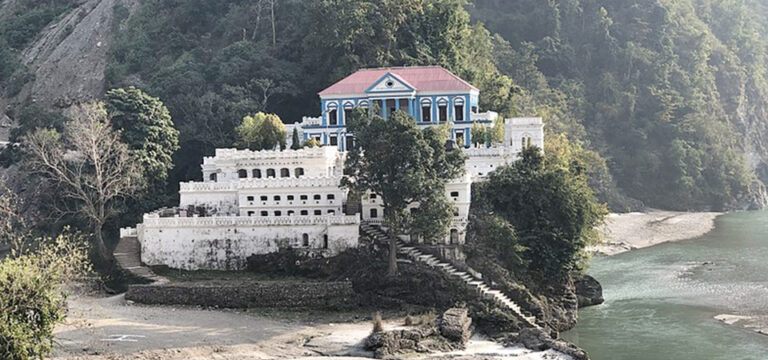
Have you been to Rani Mahal? If not, get ready today. There you will find the happiest moment of your life. This place is so charming that you will enjoy it no matter the age, choice and emotion.
Rani Mahal, also known as the Taj Mahal of Nepal, is famous for its scenic views. There is a crowd of people exchanging love at Rani Mahal, which is considered a symbol of love.
Rani Mahal was built in 1954 BS (1898). Khadga Shamsher built it in Yuyani style according to the design of a British engineer. The palace was built in memory of his queen Tej Kumari. So, it is known as the symbol of love.
Yadav Singh Karki, vice-president of the Palpa Chamber of Commerce and Industry, said that more and more youths and adolescents are visiting the place.
Despite having five ropanis of land, the main building occupies 112 feet of land. The main building of the palace has two floors and 24 rooms. Within the palace area, there are water ponds, gardens, urns, modern style parks, iron poles, a horse tie station, traditional musical instruments, a resting place and Shiva Temple.
Anyone who arrives in the area returns happily. “It was a pleasure to see the view,” said Binod Aryal, who was visiting from Surkhet. He expressed his excitement after visiting the place and said what a greener environment there is.
The number of tourists visiting Rani Mahal to see natural beauty is also high. Newlyweds and loving couples come for dates. Crowds of people, children playing and filming can be observed there.
There are plenty of couples who visit Rani Mahal to see the cool water flowing in Kali Gandaki just below the palace, said Sapna Kshatriya, a local.
From time to time, the Nepal Army, Police and Social Services, Good Governance Club come to clean the area. The Garuda Dal battalion of the Nepal Army and the Land Conservation Office has installed a gabion wall to protect the palace.
Built 124 years ago, Rani Mahal, which has historical and archaeological significance, is a symbol of beauty in reality. Although it used to be dilapidated for many years, after a decade of renovation, the face of Rani Mahal is shining now.
Even though the tourist spot is painted, it has not been able to provide fencing and security yet. The Greek-style Rani Mahal is compared to the Taj Mahal in India, according to locals.
Yuvadurga Bahadur Thapa said that if the archaeology department takes care of it, it will also be safe for the coming generations. “If proper protection and transportation facilities are provided, the map of the deserted Rani Mahal will not only be beautified but also become an attraction for domestic as well as foreign tourists,” Thapa said.
In order to make Rani Mahal a tourist choice, the District Coordinating Committee of the Association and the Palpa Industries Chamber of Commerce and Industry have planned to use the tourism information board as well as maps and paying accommodation facilities in Rani Mahal for the protection of the palace and to build a garden.
Tourists used to flock to the area before the construction of the Kali Gandaki Hydropower Project in Mirmi, Syangja. According to the locals, the tourists stopped coming here after the river was dried up to construct a dam in Mirmi.
According to the local Deepak Kshatriya, Rani Mahal has been deserted for some time due to the COVID-19 pandemic. The wind of 1986 had made the palace ugly. Although it was rebuilt1998, it became dilapidated due to a lack of protection.
Only after that, it was preserved as it was built by raising a foundation from the riverbank of Kali Gandaki.
If the local administration, District Development Committee, Building Division Office and other concerned bodies work together to make Rani Mahal a true tourist destination, Rani Mahal will help to uphold the name of not only Palpa but also Nepal.
Local Suresh Pandey said that the government has not been able to pay attention to the precious palace while bringing foreign aid in the name of tourism.
It took five years to build Rani Mahal, located 13 kilometers north of Tansen of Palpa on the bank of Kali Gandaki.
Source : TRN,






